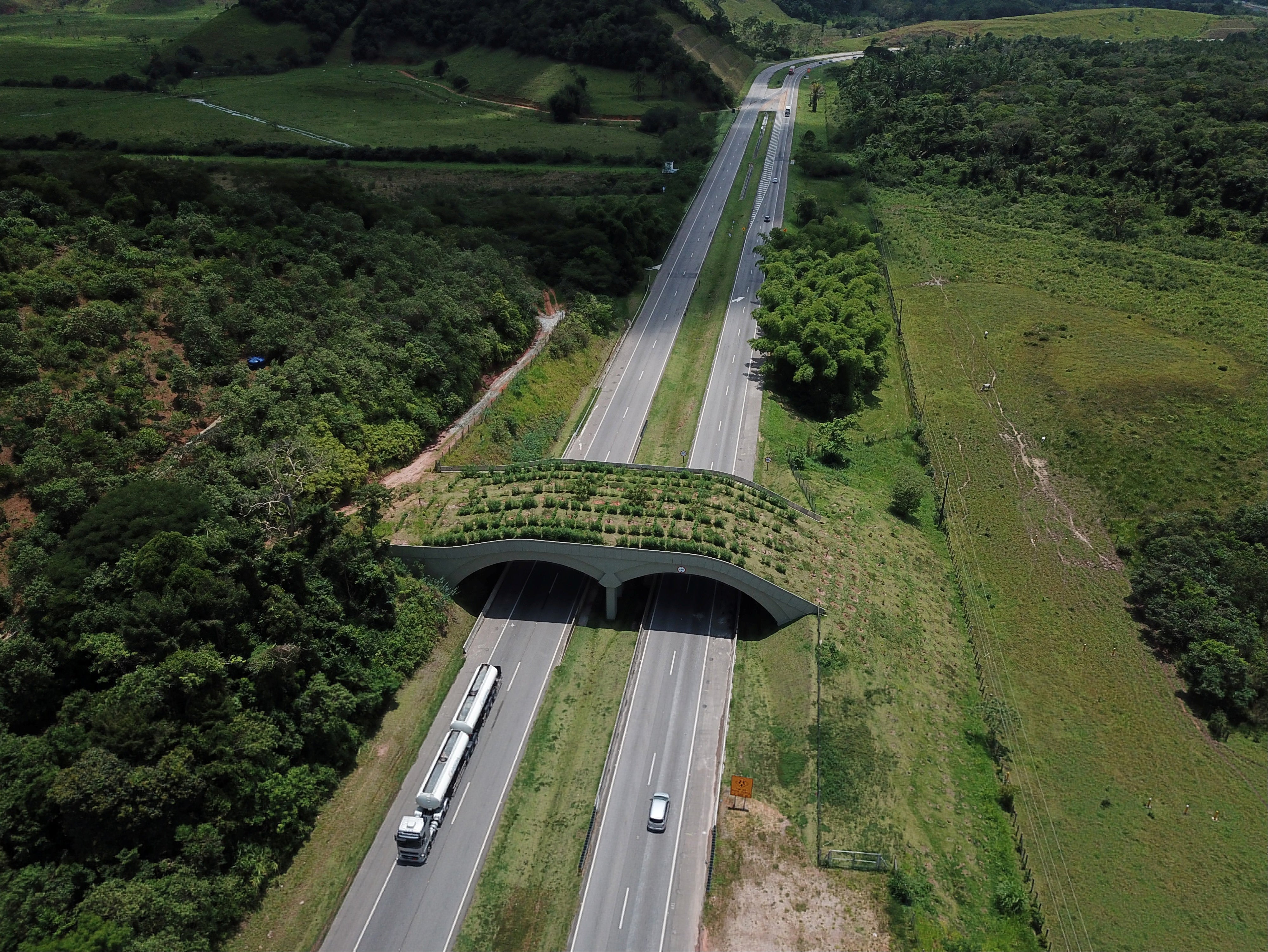Brazil builds monkey bridge to help endangered species cross road
Golden lion tamarins had become isolated to one small area of forest because of dual carriageway

A bridge has been built to help a group of endangered monkeys safely cross a busy road amid fears over falling population numbers.
Conservationists in Rio de Janeiro came up with the idea to help the golden lion tamarins access more forests.
The Atlantic Forest of Rio de Janeiro is the only place in the world where the species still exists in the wild.
Experts had grown concerned that the monkeys had become confined to a small area of forest because of a dual carriageway.
But an ecological bridge, covered in trees and plants, means they can now easily traverse the busy road and roam across a bigger area.
Luís Paulo Marques Ferraz, executive secretary of Brazil’s Associação Mico-Leão-Dourado (Golden Lion Tamarin Association), told Reuters: “Scientists have shown that the population living there would be completely isolated from the other side of the road and that would create a real problem in terms of conservation.
“Genetically that population would be isolated and that is really bad. We need a large forest protected and connected.”
Mr Ferraz said a population of 2,000 golden lion tamarins should have at least 25,000 hectares of forest, but the species has lost about 95 per cent of its natural habitat in Brazil because the forest has been split up by pastures, roads and towns.
Conservationists have spent the last few decades rescuing the monkeys from the brink of extinction – but that was all put at risk by an outbreak of yellow fever.
The disease wiped out 32 per cent of the population in 2018, cutting numbers from about 3,700 to 2,500, according to a study.
Subscribe to Independent Premium to bookmark this article
Want to bookmark your favourite articles and stories to read or reference later? Start your Independent Premium subscription today.

Join our commenting forum
Join thought-provoking conversations, follow other Independent readers and see their replies